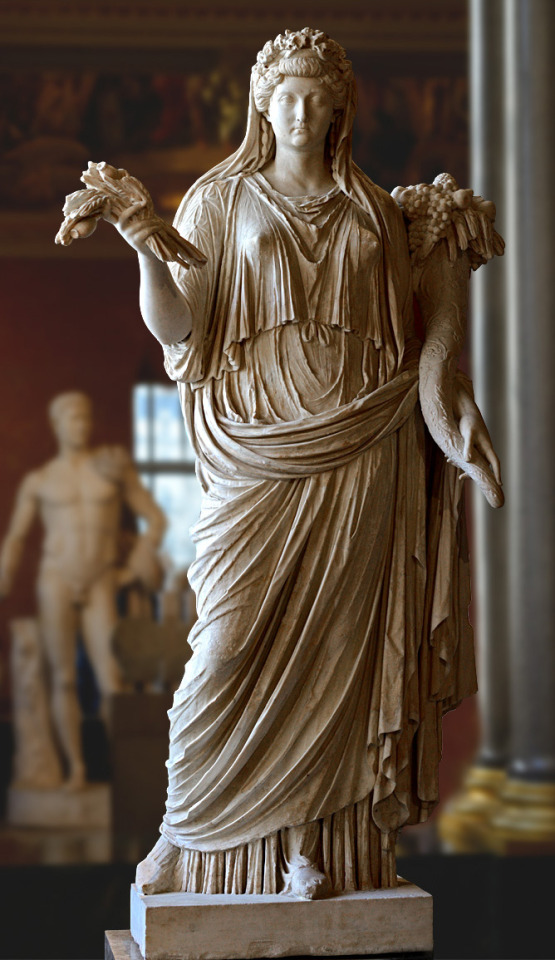#Roman Empress
Explore tagged Tumblr posts
Text
Ancient trans women getting recognised!
#history#trans#trans rights#lgbt#lgbtqia#lgbtq community#transgender#roman empire#roman empress#trans history
317 notes
·
View notes
Text

So happy to finally have this done! Only two more grids to go!
(1) Livia Drusilla, Livia Orestilla, Lollia Paulina
(2) Milonia Caesonia, Valeria Messalina, Agrippina the Younger, Claudia Octavia
(3) Claudia Acte, Poppaea Sabina, Statilia Messalina, Sporus <3
(4) Galeria Fundana, Antonia Caenis, Berenice of Cilicia, Domitia Longina
(5) Pompeia Plotina, Vibia Sabina, Antinoüs <3, Faustina the Elder
(6) Galeria Lysistrate, Lucilla, Panthea, Faustina the Younger
(7) Bruttia Crispina, Marcia Demetrias, Flavia Titiana
#roman empire#roman empress#ancient rome#digital art#history art#1st century bc#1st century#2nd century#empress livia#messalina#lucilla#roman tag#jewish tag#greek tag#julio claudian dynasty#flavian dynasty#nerva antonine#caligula#emperor nero#hadrian#augustus
14 notes
·
View notes
Text

'Eudocia' by Noriyoshi Ohrai.
Cover art for 'SF Adventure', published May 1985 in Japan.
#Art Of The Day#Art#AOTD#Noriyoshi Ohrai#The Beauty In Myths#SF Adventure#Eudocia#Female#Feminine#Empress#Roman Empress#imaginative Realism#Fantastical Art
166 notes
·
View notes
Text










I recently had a lesson about roman's portrait and now I'm obsessed by the women's hairstyles (the last two pictures are in the reblogs, and also tell me why you like the hairstyle you picked, if you want).
#ancient rome#roman empress#archaeology#roman portraits#hairstyle#hairstyles#livia drusilla#poppaea sabina#Domitia longina#ulpia marciana#pompeia plotina#faustina major#annia lucilla#vibia sabina#gods she's beautiful#iulia domna#cornelia salonina#sallustia orbiana#roman statue#roman archaeology#roman empire
7 notes
·
View notes
Text

Constantine the Great (272-337) and his mother Helena of Constantinople (246/248-330).
#saints#christianism#catholicism#constantine the great#roman emperor#roman empire#helena of constantinople#st helena#roman empress#mater senatus#mater castrorum#mater patriae#augusta#constantinian dynasty
12 notes
·
View notes
Text
"If you’ve read my article on Emperor Nero, you’ve probably heard about Emperor Claudius’s fourth wife, Agrippina. She was one tough lady, and history didn’t paint her kindly because of it. Often depicted as cold, calculating, and downright murderous, Agrippina’s far-reaching involvement in Roman politics was perceived as overtly “masculine” and therefore feared. It’s ironic, therefore, that her predecessor, the subject of today’s article, Empress Messalina, was also considered transgressive due to her overly “feminine” image."

Read the rest here: https://open.substack.com/pub/ananyajagoorie/p/rumour-has-it?r=7dcr2&utm_campaign=post&utm_medium=web
#history#women in history#substack#fact of the day#history facts#ancient history#ancient rome#roman history#roman empire#roman empress#messalina#emperor claudius
4 notes
·
View notes
Text


some friends and I have a fancast of Greta Garbo in a 1930s historical epic about the byzantine Empress Irene so ofc I drew it
2K notes
·
View notes
Text

The voices (Rhaenyra and Amethyst Empress parallels) got me so good this time fanart was produced 😯
#art#artist#artwork#digital art#digital artist#drawing#fanart#digital artwork#book#digital drawing#asoif fanart#asoiaf#a song of ice and fire#rhaenyra targaryen fanart#queen rhaenyra#rhaenyra targaryen#the amethyst empress#amethyst empress#fireandblood#book art#artists on tumblr#george rr martin#small artist#art on tumblr#my roman empire#house of the dragon
1K notes
·
View notes
Text

The statue of Livia, wife of emperor Augustus and mother of emperor Tiberius, portrayed as the goddess Ceres.
#ancient rome#livia#livia drusilla#empress livia#roman empire#julio claudian dynasty#ancient culture#ancient history#ancient art#statue#ceres
513 notes
·
View notes
Text

Day 6: Berenice of Cilicia, client queen of Roman Judea. During the First Jewish-Roman War, she advocated for the safety of her people, but the violence escalated anyway. She curiously became the mistress of future emperor Titus while he was in Judea quelling the revolt, and may have eventually become his wife had it not been for the Roman stigma against foreign queens.
#grayjoytober2024#berenice of cilicia#julia berenice#roman judea#roman empire#roman empress#history art#traditional art#1st century#flavian dynasty#jewish tag#roman tag#inktober#inktober 2024#drawtober#drawtober 2024#historical women
12 notes
·
View notes
Text

Roman empresses: a 5th-century cameo depicting Maria (d. 407 CE) - daughter of Stilicho - and her husband emperor Honorius
Atribution: Unknown photographer, Public domain, via Wikimedia Commons
#Roman#empress#emperor#5th century CE#cameo#ancient#art#clothing#relief#Stilicho#Honorius#Roman women#hairstyle
82 notes
·
View notes
Text

Isabella of Portugal by Titian, 1548.
#classic art#painting#titian#italian artist#16th century#portrait#female portrait#indoor portrait#empress#holy roman empress#queen#queen of spain#habsburg#fashion#brown dress#pearls#window view
104 notes
·
View notes
Text

"During the reign of her husband the primary function of an Augusta was the orchestration of ceremonial at the imperial court, a highly stylised and intricate affair given the ceremonial nature of imperial life, which was based primarily around the Great Palace, a huge complex extending from the hippodrome to the sea walls, with its own gardens, sporting grounds, barracks, audience halls and private apartments; the Great Palace was the official residence of the emperor until 1204, though under Alexios Komnenos the imperial family usually occupied the Blachernai Palace in the north-west of the city, while there were other residential palaces in and outside of the capital. Empresses’ public life remained largely separate from that of their husbands, especially prior to the eleventh century, and involved a parallel court revolving around ceremonies involving the wives of court officials. For this reason an empress at court was considered to be essential: Michael II was encouraged to marry by his magnates because an emperor needed a wife and their wives an empress.
The patriarch Nicholas permitted the third marriage of Leo VI because of the need for an empress in the palace: ‘since there must be a Lady in the Palace to manage ceremonies affecting the wives of your nobles, there is condonation of the third marriage…’ While the empress primarily presided over her own ceremonial sphere, with her own duties and functions, she could be also present at court banquets, audiences and the reception of envoys, as well as taking part in processions and in services in St Sophia and elsewhere in the city; one of her main duties was the reception of the wives of foreign rulers and heads of state. Nor were empresses restricted to the capital: both Martina and Irene Doukaina accompanied their husbands on campaign.
The empress was also in charge of the gynaikonitis, the women’s quarters in the palace, where she had her own staff, primarily though not entirely composed of eunuchs, under the supervision of her own chamberlain; when empresses like Irene, Theodora wife of Theophilos, and Zoe Karbounopsina came to power they often relied on this staff of eunuchs as their chief ministers and even their generals. Theodora the Macedonian was unusual in not appointing a eunuch as her chief minister, perhaps because her age made such gender considerations unnecessary. The ladies of the court were the wives of patricians and other dignitaries: a few ladies, the zostai, were especially appointed and held rank in their own right. The zoste patrikia was at the head of these ladies (she was usually a relative of the empress),and dined with the imperial family."
Byzantine Empresses: Women and Power in Byzantium AD 527-1204, Lynda Garland
#history#women in history#women's history#byzantine empresses#byzantine empire#byzantine history#eastern roman empire#queens#historyedit#historyblr#medieval history#irene of athens
97 notes
·
View notes
Text

I am also, thank God, well, as is the little one. I do have a slight chill, but hope to get rid of it in the fresh air. I went out for the first time last Monday. My return was pleasant, but quite painful. I hadn't imagined it would be so difficult. With all of this, I was in great pain for only an hour and a half. The little chills started on me at 3:00 a.m. and lasted until 3:45 to 11:00 a.m. That doesn't make my heart heavy, I hope, with God's help, to be in that position next year and to be able to cope better.
Excerpt from a letter written by Claudia Felicitas of Austria, Holy Roman Empress, on October 10th, 1674. She writes to her friend, Johanna Theresia von Harrach. She's discussing the recent birth of her first child, Anna Maria, who was about a month old at the time.
#Claudia Felicitas of Austria#anna maria of austria#house of habsburg#habsburg#holy roman empress#Johanna Theresia von Harrach#long live the queue
23 notes
·
View notes
Text

Infanta Maria (1528-1603), Empress
Artist: Anonymous
Date: After 1557
Medium: Oil painting
Collection: Kunsthistorisches Museum Vienna, Austria
Maria of Austria, Holy Roman Empress
Maria of Austria or Maria of Spain (21 June 1528 – 26 February 1603), also known as Isabel, was the empress consort and queen consort of Maximilian II, Holy Roman Emperor, King of Bohemia and Hungary. She served as regent of Spain in the absence of her father Emperor Charles V from 1548 until 1551 and was one of the most powerful empresses of the Holy Roman Empire.
#portrait#half length#painting#fine art#oil painting#artwork#maria of austria#holy roman empress#chair#costume#pearls#bonnet#rings#queen consort of germany and bohemia#house of habsburg#holy roman empire#queen consort of hungary#austrian history#regent of spain#european art#16th century painting
23 notes
·
View notes
Text
Succession hot take of the night:
Roman’s deepest wish is to be accepted even at his smallest and most pathetic; to take off the mask his upbringing and social position have compelled him to wear. That’s why he so enjoys the slime puppy treatment.
Kendall’s greatest drive, on the other hand, is to seek constant adulation from every direction, to shore up the inflated perception of himself that his dad taught him to project. He is seeking reassurance that the mask he wears is who he is.
Just to round things out:
Siobhan wants constant reassurance that she won’t just be cast aside, the way that her dad has cast her aside, and the way her mother has, and her brothers, and whoever she was on the rebound from when she met Thomas the Debatably Broad. (And the way she saw her mother cast aside by her father.)
Meanwhile, Connor is just googling Napoleon cosplay “-dynamite”
#and his empress josephine is considering arsenic poisoning#even after the lecture on how that’s not actually what killed napoleon#especially after that actually#succession#roman roy#kendall roy#shiv roy#slime puppy#gerri kellman#roman roy sexuality#succession hbo#hbo succession#connor roy#almost forgot connor#willa ferreyra#willa as empress josephine
125 notes
·
View notes